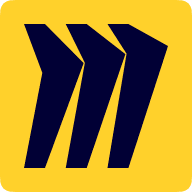Thematic Conversation as Practice

The practice of theme-centered conversation for professional workers
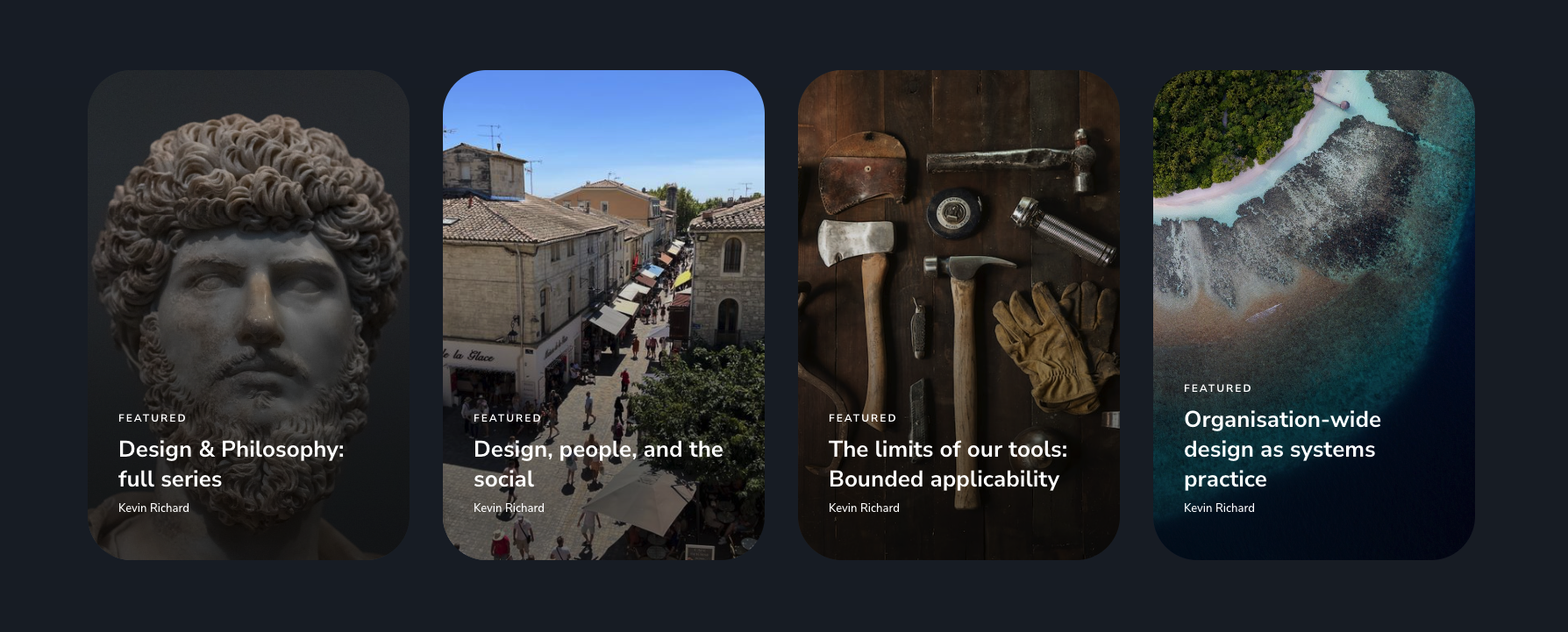
The above screenshot is part of the homepage of Design & Critical Thinking (D&CT) which is an online community of practitioners who are passionate about design, innovation, change, systems practices, and collective knowledge & sensemaking.
D&CT was founded by Kevin Richard in August 2020. In the past two years, the community built a developmental platform for a group of designers and innovators.
I found the community on Medium at the end of 2020 and meet some members of the community. I discovered the amazing Product Field canvas in the community. I met Daiana Zavate there and we run an improvised collaboration on designing Concept Discovery Canvas on March 18, 2022.
Eventually, I started watching the development of D&CT since I wrote a book (draft) titled Platform for Development: The Ecology of Adult Development in the 21st Century. The book adopts Project-oriented Activity Theory and the Ecological Practice approach as theoretical resources. In order to connect theory and practice, I develop several intermediate concepts and frameworks. One core idea of the book is called Developmental Platform. See the diagram below.

The concept of Developmental Platforms aims to offer an ecological concept for interdisciplinary developmental study around social platforms. It considers Community as a social platform for adult development.
From this perspective, I consider D&CT as a developmental platform for designers and innovators.
This article aims to introduce a specific type of activity discovered in the routine practice of the D&CT community.
Thematic Conversation
The specific type of activity is named Thematic Conversation which refers to a practice of theme-centered conversation between professional workers.
The D & CT community has a routine practice called "virtual chalet" which is a recurring informal event (once every 2 weeks) for the community to take the space & time to discuss, share ideas & experiences, find support, ask questions, etc.
On Feb 15, 2022, D & CT started a new activity which is mediated by a series of keywords. According to the curator of the community, "In this session, we used a keyword as a catalyst to approach the broader topic of the role of designers in society, and the question 'how could we become better designers?' which will be a running theme for the coming sessions & workshops."
- Virtual Chalet, 15 Feb 2022 - Actionable, knowledge, emotions, affordance #becomingbetterdesigners
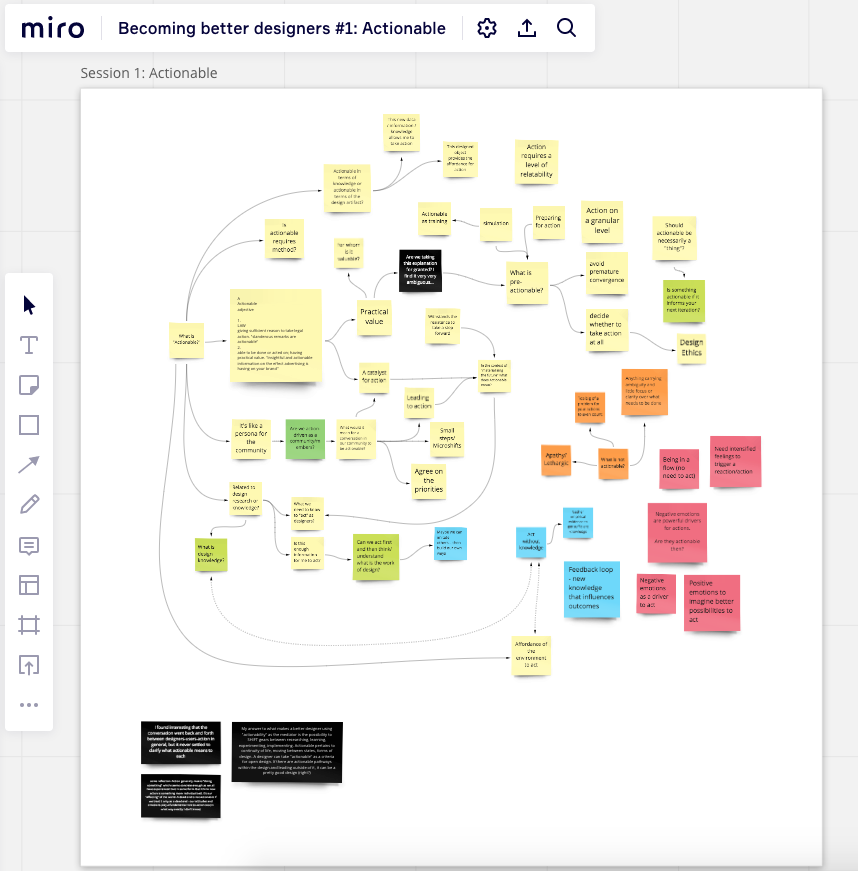
The above diagram is the mindmap of the event. You can find more details in the diagram below.
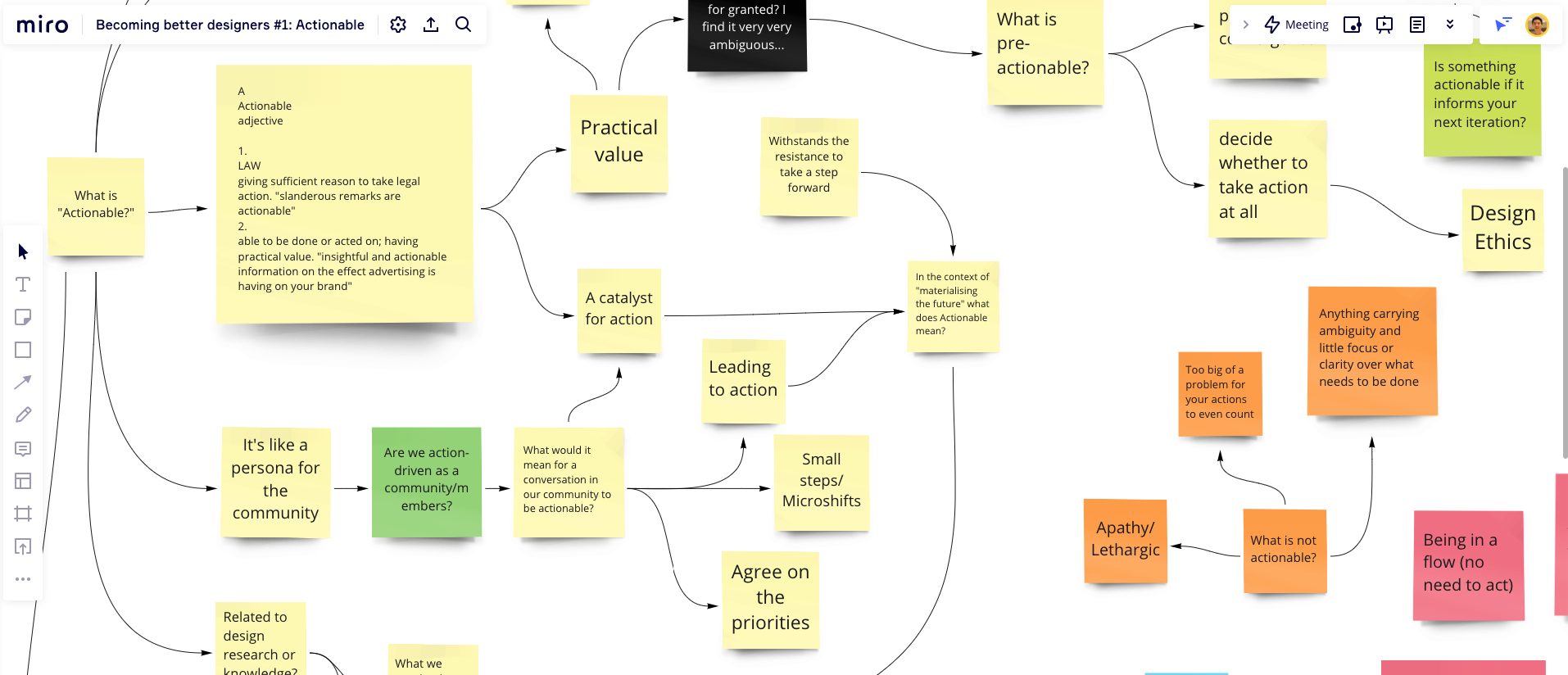
They recorded the event and shared the whole video on YouTube. See below.
The theme of the event is "Actionable, Knowledge, Emotions, Affordance". I found three notes from their board. See below.
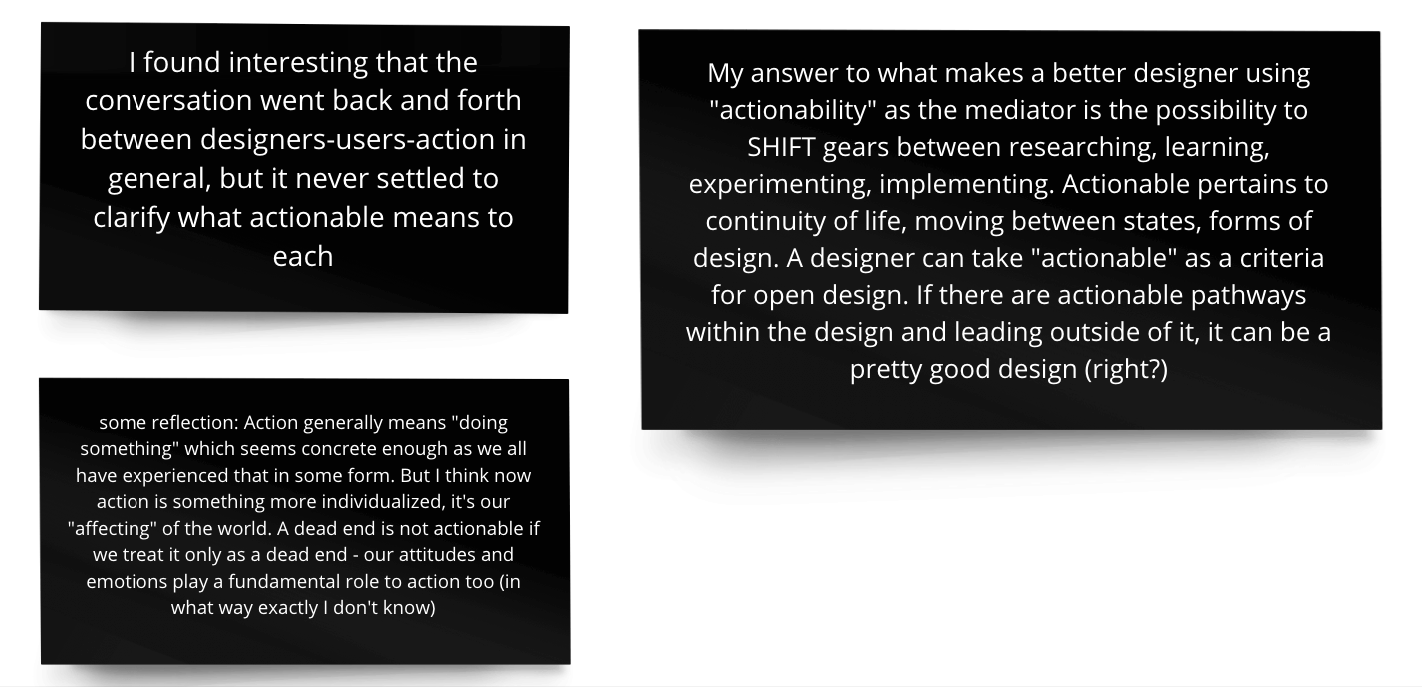
On March 29, 2022, D & CT hosted the second virtual chalet of #Becoming Better Designers.
In this session, we continue our exploration of the theme of becoming better designers through the keyword "data", and what it means (or not) to be "data-driven". We clarified the different kinds of data (explicit, implicit, qualitative, quantitative) and the importance of context to make sense of them. We also discussed the ethics of using data, how they are collected, and to what end.
The theme of the event is "Using data to make decisions".
You can watch the above video and see the process of drawing a mindmap about data.
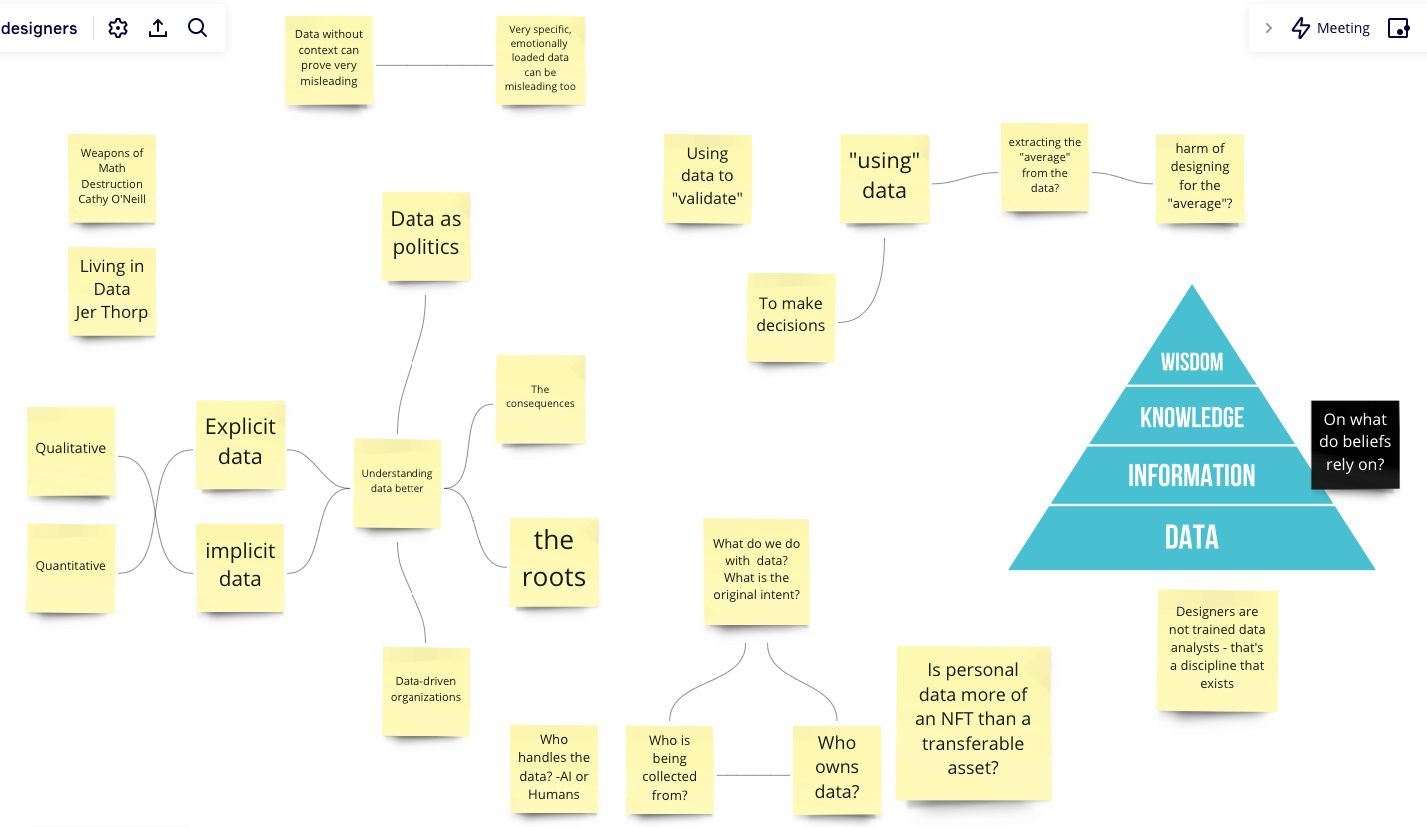
At 7:48, someone posted the popular DIKW pyramid on the board. See the screenshot below.
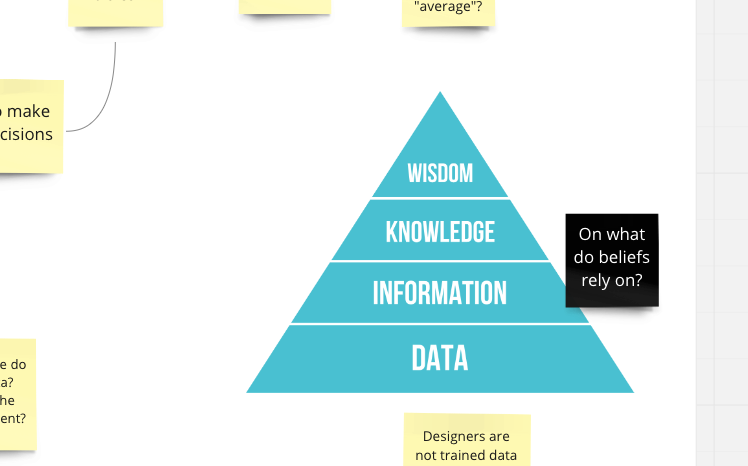
I notice that this is the only model you can find on their board for the series of events.
On April 12, 2022, D & CT hosted the third virtual chalet of #Becoming Better Designers.
We continue our journey in exploring the theme of becoming better designers, and the role of designers & design in society, using a keyword as a medium for conversations. This week we're at letter "E", exploring the concept of "Expertise" from various perspectives. We used the island template, a (work in progress) collaborative mapping method that uses topography as a categorisation metaphor to help make sense of a context.
The theme of the event is "Being the expert that knows he doesn't know".
If you pay attention to the whiteboard, you will find a major change in the format of the diagrams. Before this event, they use the Mindmap format to organize topics.

The new style is called island map which is formed by a group of hexagons.
They used four metaphors and four colors to define four types of topics.
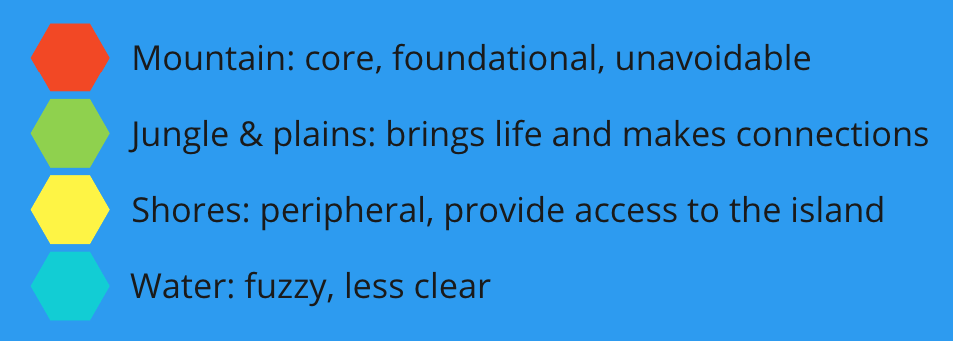
Where did these four metaphors come from? Maybe it came from the Explorer Framework which is a guide developed by the D&CT community.
They also made a set of "sidebar" sticky notes as navigation: Actionable, Benefits, Crisis, Data ...

On April 26, 2022, D & CT hosted the fourth virtual chalet of #Becoming Better Designers.
In this session, we continue our exploration of the theme of becoming better designers through the keyword "Failure", and how it conditions our understanding of success (and vice-versa): i.e. a short-term success can be a long-term failure. Moreover, preparing for failure means measuring for it and indirectly creating a fail-safe space, enabling us to discover other opportunities. Therefore, failure is not the goal, it is a means to move beyond an otherwise limiting dichotomy.
The theme of the event is "Going beyond success and failure".
Though this is an event for designers, the topic of "Failure" is more general. See more details of their island map from the screenshots below.
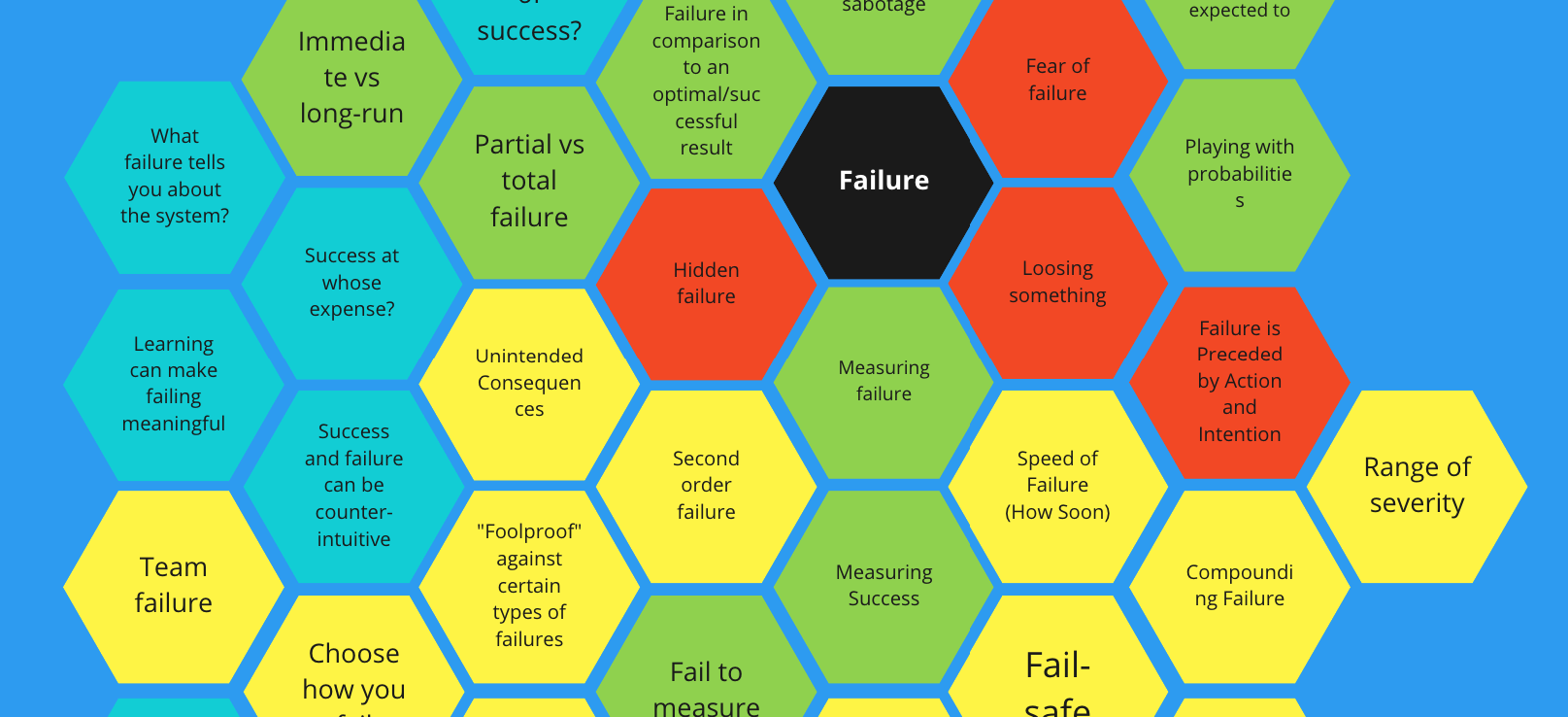
On May 10, 2022, D&CT hosted the fifth virtual chalet of #Becoming Better Designers.
In this session, on our exploration of the theme of “becoming better designers”, we discuss "Goals" (and Jobs to be done) as a way to frame our understanding of a context, people's intents, and how to create useful & valuable solutions for them. Goals are utilitarian but tend to be confused with intents, and might hide the importance of the journey through discovery as tokens of apparent clarity. We also discuss how sense-making practices could enhance the process of coming to a job, not by relying on one individual's perspective.
The theme of the event is "Not confusing goals with intents".
They also use "G for Goals (and jobs to be done)" as the name of this section. However, they didn't discuss the Jobs-to-Be-Done framework. It seems that "Customer's Job" is part of designers' language.
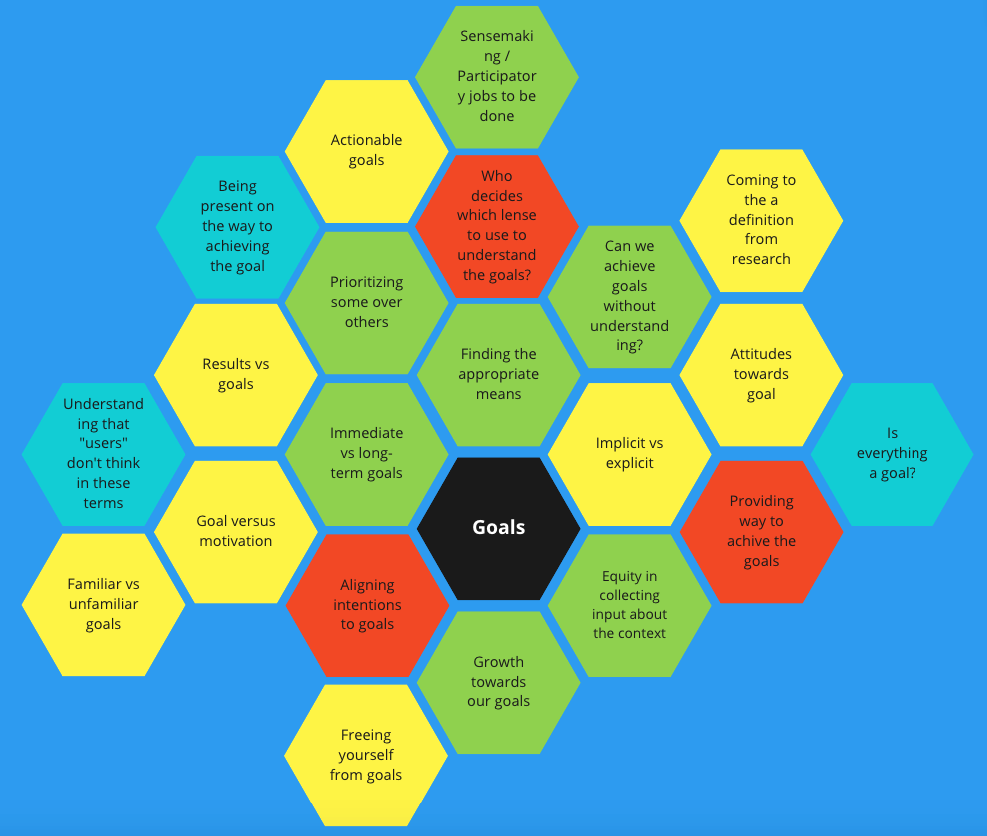
You can find their island map on Miro:
The "Becoming Better Designers" project only hosted the above five events. Later, the D&CT moved to other themes.
Discussion
I consider the "Becoming Better Designers" project as an example of the Thematic Conversation practice.
Why do I publish this article under the category of "Activity as Practice"?
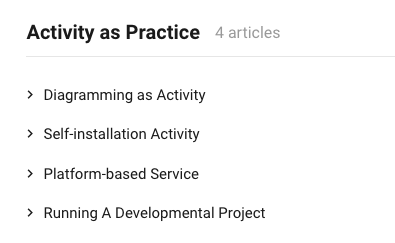
I want to use this category to collect to build a collection of Activities or Practices.
Thematic Conversation refers to a practice of theme-centered conversation between professional workers.
Thematic Conversation is a category while the "Becoming Better Designers" project is an example of the category.
However, a Thematic Conversation Activity doesn't need a mindmap or an island map. It doesn't need a digital whiteboard for conversation. It can be an offline event too.
Also, a Thematic Conversation Activity can be text-only without any video chats.
A Thematic Conversation Activity can happen between a group of people or even two people.
Why do we need a new category called "Thematic Conversation" since we can directly use the term "Conversation"?
For me, the reason is very simple. I want to use the new term "Thematic Conversation" to highlight the "theme" aspect of conversations.
Why do I choose the "Becoming Better Designers" project as an example? Because I use the "Thematic Engagement" toolkit (v1.0) to research "Thematic Conversation".
The "Thematic Engagement" approach is supported by the following two approaches:
- The Themes of Practice Approach (2019, 2021)
- The Project Engagement Approach (2021, 2022)
The Themes of Practice Approach emphasizes the real actions about themes. The Project Engagement Approach belongs to the tradition of Activity Theory.
Both approaches care about materials, concepts, and environments. The "Becoming Better Designers" project uses a digital whiteboard platform as its environment and uses the mindmap format and the island map format as material instruments to curate their events.
If we move from the "Thematic Conversation" category to the "Becoming Better Designers" project, we can use the SET framework to understand this particular case.

The SET Framework was originally named the Ecological—Activity Hybrid Approach. It was developed from 2017 to 2020 when I worked on several projects which refer to a new type of social action platform.
Traditionally, Activity Theory uses "Subject - Mediation - Object" as a basic unit of analysis. The Activity system model expands the basic unit of analysis to "Subject - Mediation - Object - Rules - Community - Divisions of Labour". However, I found there is a gap between Activity Theory and Intersubjective Social Design.
For example, I worked on a one-to-one video talk product from 2017 to 2018. Later, I worked on other projects which adopt Structured Engagement as a design pattern. These projects share the following aspects:
- Host: a special type of actors who host the whole activity.
- Structured Engagement: the activity is human-to-human interactions with a special structured process.
- Environment: the environment is also part of the design of the activity.
I started learning Activity Theory, Ecological Psychology, and other theories around 2015. Since then, I have often used some theoretical concepts such as Mediation from Activity Theory, Affordance from Ecological Psychology, etc for our product development discussions.
In 2019, I developed the Ecological — Activity Hybrid Approach by adopting ideas from Activity Theory and Ecological Psychology. In 2020, I renamed the approach SET which stands for Structured Engagement Theory.
The "Becoming Better Designers" project is also a good example of "Structured Engagement" because its process was designed with a set of themes and the mindmap and island map.

